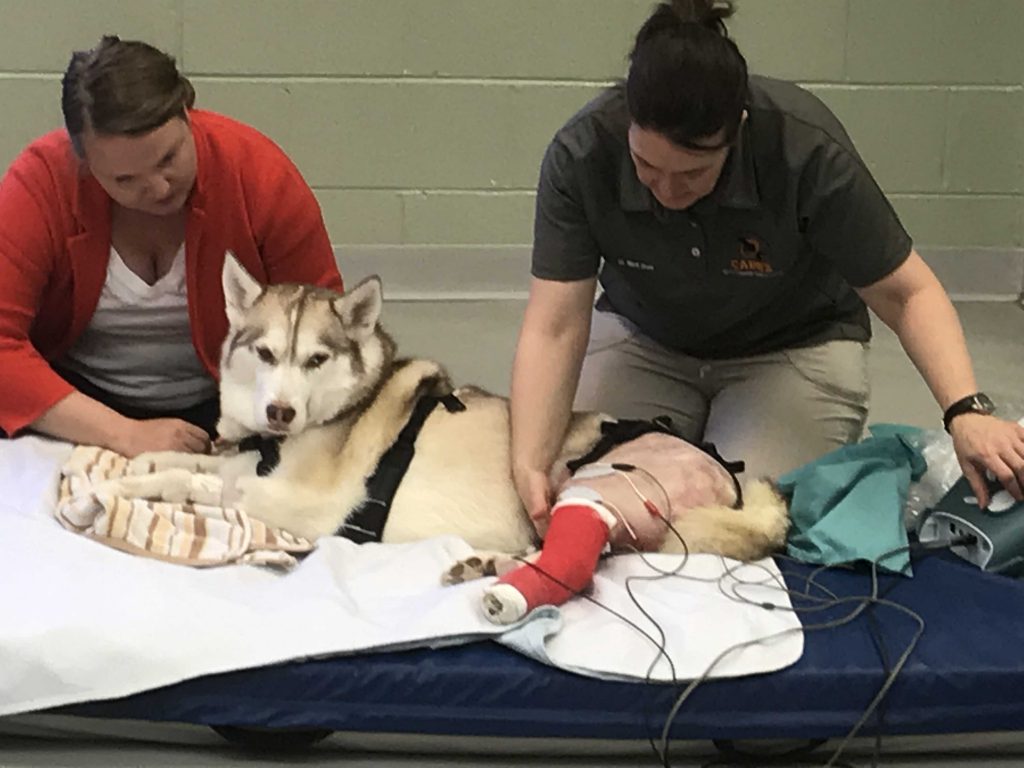Veterinarian Update
We are sad to announce that after 5 years at Allandale Vet, Dr. Stephanie Baker will be moving on from the practice. Her last day will be Friday May 24th. Please join us in wishing her well and thanking her for many years of excellent care of both our clients and patients. She is an amazing clinician and a caring individual and will be greatly missed.
Dr. Baker will no longer be seeing new clients at this time.

Help us give some #hope for the holidays!
I think we can all admit this year has been a tough one. With the ongoing health and economic difficulties, it makes it hard, if not impossible to have a very happy holiday season for some of our fellow Austinites. Now, more than ever before, homelessness is plaguing our communities.
This December in the spirit of giving, we will be donating a portion of the costs of every wellness visit for your special pets to Caritas of Austin. Caritas of Austin is a non-profit organization whose mission is to prevent and end homelessness in the Greater Austin area.

We thank you for your continued support and kindness during this difficult time. Check out our website at www.allandalevetclinic.com. Follow us on facebook for more information.
Wishing you and your family peace and health!
FAQ: Coronavirus and your pet

We do know that COVID-19 is a disease caused by SARS-CoV-2, a newly recognized member of the coronavius family that appears to primarily infect humans.
Other coronaviruses are responsible for things like colds in humans. However, each member of a viral family is different from each other.
This particular coronavirus is spreading rapidly because humans don’t yet have immunity built up in our populations. This is why practicing social distancing, disinfecting surfaces, and washing your hands are important to slow the spread of the virus throughout our community.
Can I get SARS-CoV-2 from my dog or cat?
As of now, there’s little indication that dogs or cats are likely to carry or transmit the virus to humans; however, there is the rare chance this can happen. The biggest concern right now is pets acting as fomites — a virus-contaminated surface.
So, for now, avoid snuggling your pets with your face and as always, wash your hands after handling or picking up after your pet.
Can my dog or cat get SARS-CoV-2 from a person?
Possibly. According to the CDC, “there has been at least one case where a dog tested positive for the virus after being exposed to an infected human. However, human-to-pet transmission seems to be quite rare.”
My pet has an appointment, but I’m not feeling well.
If you or anyone in your household is running a fever or showing other signs of illness, please stay home and take care of yourself. We’d be happy to reschedule your appointment.
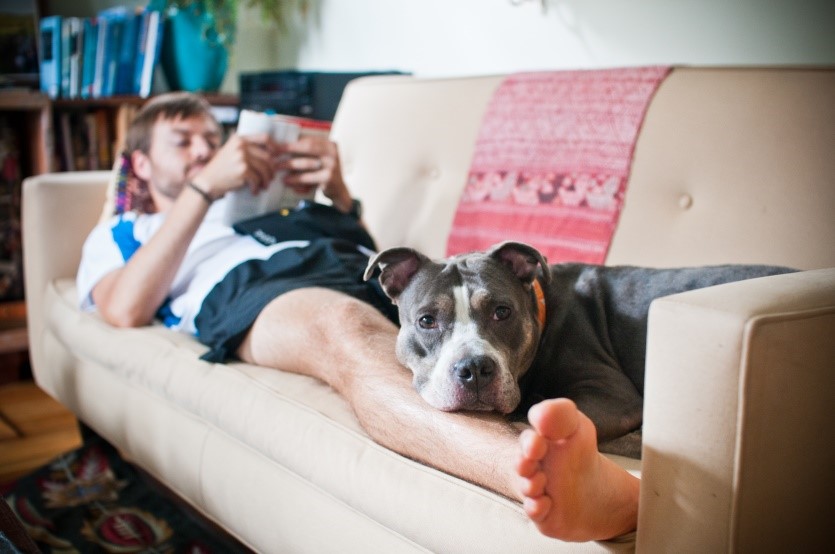
If I’m sick, how should I care for my pets?
The CDC recommends tat if possible, “have another member of your household care for your animals while you are sick. If you must care for your pet or be around animals while you are sick, wash your hands before and after you interact with pets and wear a face mask.”
Should I avoid contact with pets or other animals if I am sick with COVID-19?
According to the CDC, “you should restrict contact with pets and other animals while you are sick with COVID-19, just like you would around other people. Although there have not been reports of pets and other animals becoming sick with COVID-19 limit contact with animals until more information is know about the virus.” Additionally, any pet you interact with could act as a fomite (a virus-contaminated surface) and carry the virus to other locations or humans.
As with so many things in life, exercising common sense and some extra care, staying home, plus lots of hand washing and sanitizing, will benefit us all.
Please let us know if you have COVID-19 questions or concerns specific to your pet.
Sincerely,
Your friends at Allandale Veterinary Clinic
COVID-19 Frequently Asked Questions

With the rapid spread of both news and COVID-19 disease from the SARS-CoV-2 virus, it’s hard to know where to turn for information. Many of you are as concerned about your pets as you are about your human family. We know how you feel! You want the facts to help keep your whole family – furry, feathered, scaly, or human – safe.
Current office procedures
Are you still open?
Yes! We are still open with adjusted hours.
Our current hours are: 9 AM – 5 PM, Monday – Friday, and 8 AM – 12 PM on Saturdays*
*These may be subject to change, and we will keep you updated as they do.
I left a message or sent an email, when can I expect to hear back?
Your messages are very important to us! Due to limited staff and reduced hours during this time, please allow up to 48 hours for a response, especially for any messages that require communication with one of our veterinarians. Critical cases will be prioritized and responded to as quickly as possible.
Can I make an appointment?
Yes! We are currently prioritizing sick and injured pets, and pets due for their Rabies vaccinations.
If your pet is doing well and due for other vaccinations, our next availability may not be until the beginning of May.
Can I pick up a medication refill?
Yes! If you need a medication refill, please contact our office. Refills may take up to 48 hours to process. We will contact you when your medication is filled.
When you arrive to pick up your pet’s prescription, call our office. Reception will check you out over the phone and run your medication and receipt out to your vehicle.
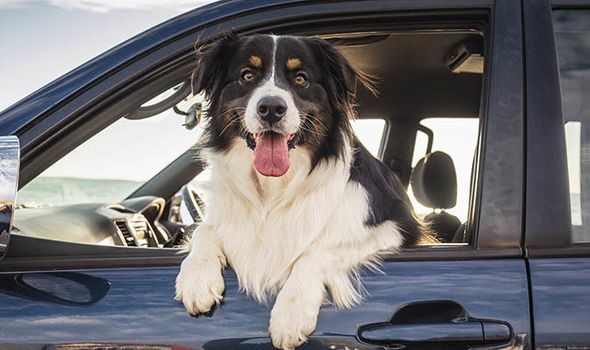
What is your check-in and appointment process?
When you arrive for your appointment, call our office and reception will check you in over the phone. Please wait in your vehicle for the duration of the appointment. At check in we will ask for the following information.
* A description of your vehicle
* A credit card to put on file
* The best phone number to reach you
* If you have had any known exposure or symptoms of COVID-19
**If you have exposure or symptoms, we may decline seeing you or your pet. We want to limit any exposure we can for the health and safety of our doctors and staff and to ensure that we will be able stay open to continue to see the pets that need our care.**
A technician will then call you to get a brief history on your pet, retrieve your pet from your vehicle, and bring them in for their exam or treatments. The doctor will then call you to discuss the plan for your pet, and well review charges and get authorization prior to running your card.
My pet has an appointment, but I’m not feeling well?
If you or anyone in your household is running a fever or showing other signs of illness, please stay home and take care of yourself. We’d be happy to reschedule your appointment.
Having a dog can help your heart — literally
https://www.health.harvard.edu/staying-healthy/having-a-dog-can-help-your-heart–literally

Dog lovers know how much warmth and comfort their canine companions add to their lives. But they might not know that a growing body of evidence suggests that having a dog may help improve heart health.
Pet ownership, especially having a dog, is probably associated with a decreased risk of cardiovascular disease. This does not mean that there is a clear cause and effect relationship between the two. But it does mean that pet ownership can be a reasonable part of an overall strategy to lower the risk of heart disease.
Several studies have shown that dog owners have lower blood pressure than non-owners — probably because their pets have a calming effect on them and because dog owners tend to get more exercise. The power of touch also appears to be an important part of this “pet effect.” Several studies show that blood pressure goes down when a person pets a dog.
There is some evidence that owning a dog is associated with lower cholesterol and triglyceride levels. A large study focusing on this question found that dog owners had lower cholesterol and triglyceride levels than non-owners, and that these differences weren’t explainable by diet, smoking, or body mass index (BMI). However, the reason for these differences is still not clear.
Dogs’ calming effect on humans also appears to help people handle stress. For example, some research suggests that people with dogs experience less cardiovascular reactivity during times of stress. That means that their heart rate and blood pressure go up less and return to normal more quickly, dampening the effects of stress on the body.
If you own a dog or are thinking about it, the potential benefits for your heart health are a nice plus. However, pets should not be adopted for the primary purpose of reducing heart disease risk. And definitely don’t add a dog to your life if you’re not ready or able to take care of one, including making sure it gets enough exercise.
To learn more about the health benefits of owning a dog, buy Get Healthy, Get a Dog, a Special Health Report from Harvard Medical School.
Adventures in Canine Rehab Certification : Part 3
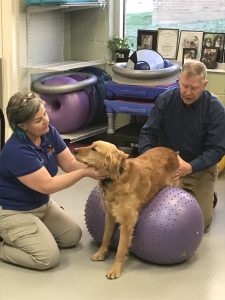
Today on Day 3 of the CCRP (certified canine rehab practitioner) training, the focus was on therapeutic exercises. While the treatment modalities I discussed previously are very important, therapeutic exercise comprises a large portion of most treatment plans. The best part about therapeutic exercise is that many of these exercises can be performed at home, allowing for pet owners to play an active role in the therapy of their pets. These routines can be varied to allow for continued interest and stimulation for the pet. They can also be gradually increased in difficulty and intensity as the patient progresses. Here are some of the exercises that we discussed today:
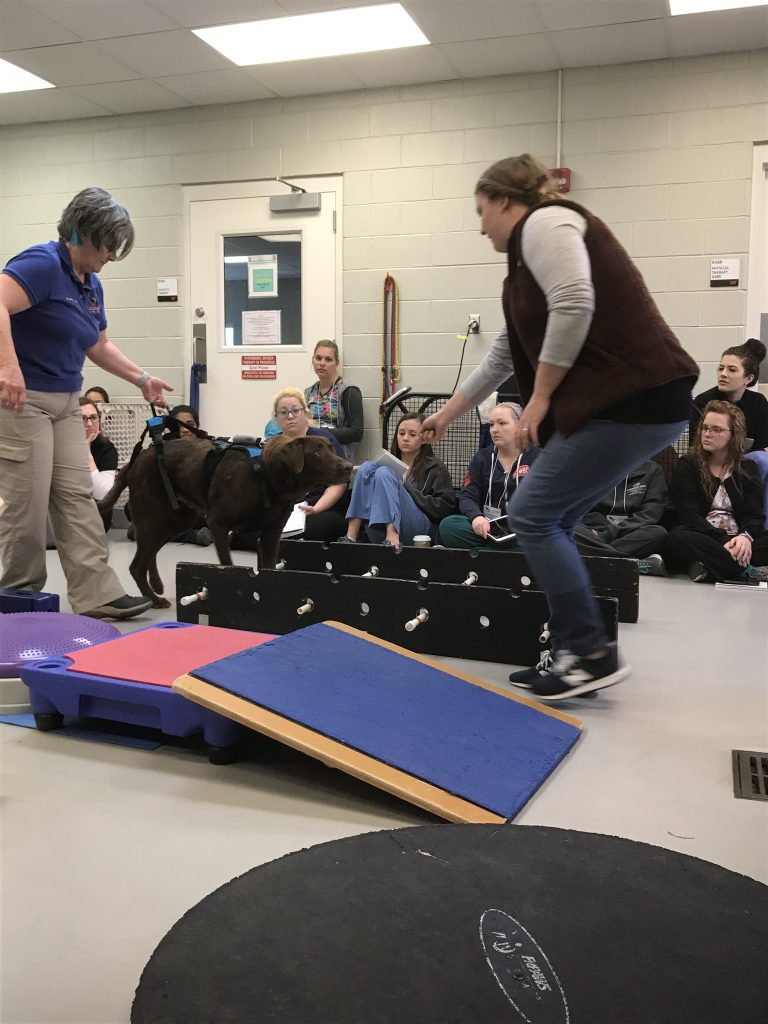
Cavaletti Rails– These are rails or poles spaced apart on the ground that the patient is encouraged to walk through. These can help enhance balance and improve weight bearing on previously injured limbs. The height of the rails can be adjusted to provide different effects on different joints.
Balance discs– These are inflatable discs that are used to provide an unstable surface to allow for balance training. The can also play a big role in muscle strengthening.
Sit to Stand exercises– The focus of this exercise is to practice sitting and standing correctly to help strengthen muscles in the hips and stifle (knee) joints. This is a great exercise to use for a majority of patients and can be performed without the need for expensive equipment.
Stair climbing– This can help improve strength and power in the hind limbs. While not ideal for patients immediately post surgery, it is definitely something that can be started once the patient is using the limb more consistently.
Treadmill– Treadmills can be used to encourage early use of a limb post surgery or injury and are ideal because the speed and incline can be varied. These can be very useful when re-teaching normal gait sequence (gait pattern training) or as part of a weight loss management plan.
My head is swimming with all of the information that I have acquired during the lab portion of training. For the final 2 days of the training, the focus will be putting it all together and coming up with a plan to start to implement a rehab training program specific to the needs of our patients.
I can’t wait to get back to the clinic and start practicing some of these techniques and observing the ways in which my patients (and their owners) can benefit.

See you around the clinic!
🙂
Dr. Mohammed
Adventures in canine rehab certification: Part 2
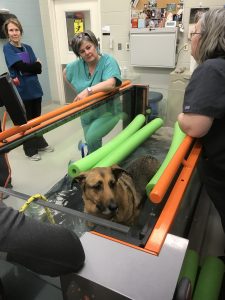
Hello again!
On the second day of our canine rehab training we were able to delve a little more in depth into some of the modalities used in rehab. While we do have laser therapy at Allandale, many of these other treatment options were unfamiliar to me prior to the training.
Today I was able to practice a few of them on live dogs who had the misfortune of being owned by veterinarians and vet techs and thus were “volunteered” to be our practice patients 🙂
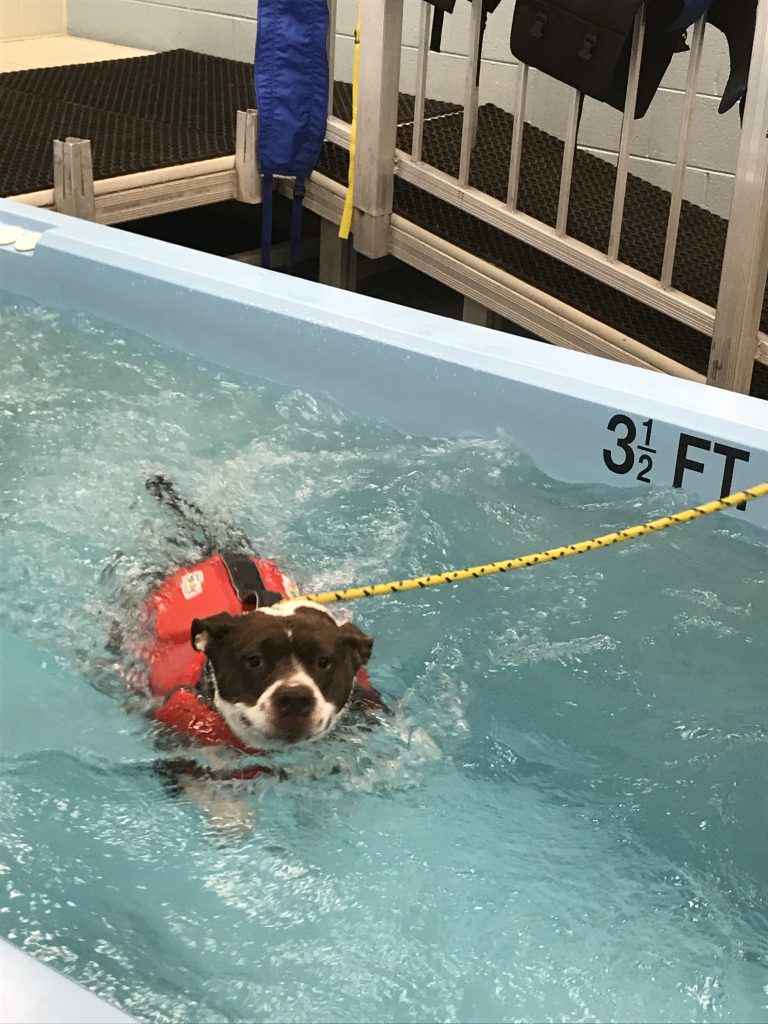
Here are a few modalities that I was able to practice:
Therapeutic ultrasound– This is the use of sound energy to affect biological tissues. Therapeutic ultrasound can be used to reduce discomfort at trigger points, help with muscle soreness following overuse injury, and reduce pain associated with osteoarthritis. It has also been shown to be beneficial with tissue healing.
Shock wave therapy– This involves using high energy focused sound waves to affect various biological responses at the cellular level. It has been shown to speed healing and increase quality of healing of soft tissues and bone. Like many of the other modalities, it also has pain relieving properties. It is used frequently in rehab for osteoarthritis and tendon injuries as well as chronic wound healing.
Neuromuscular Electrical stimulation– This is a form of electrical stimulation that causes a muscle contraction to help with muscle weakness associated with a variety of neurologic and orthopedic conditions. NMES can also reduce pain.
The key with rehab seems to be learning as much about your patient and their needs as possible, then taking that information and coming up with the best possible plan to help them reach their goals. I’m excited to learn more about ways to improve the quality of life of my patients!
More to come soon,
Dr. Mohammed
Dr. Mohammed’s Adventures in Canine Rehab Certification: Part 1

Greetings from Knoxville, TN! I am here for the next week starting my training to become certified in canine rehab at the University of Tennessee College of Veterinary Medicine. I’m super excited to learn more about this rapidly growing area of veterinary medicine. While physical therapy in humans is common, there has been more attention focused on rehabilitation of small animal patients in recent years.
Some of you may have met the wonderful Dr. Lobos who used to do rehab at the clinic. Sadly for us and our patients, Dr. Lobos moved to Colorado this past summer. I started to think a lot more about how beneficial rehab was for so many of our patients and began to explore getting certified. Some benefits of rehab in our canine patients include: increased strength and endurance, reduced pain, increased speed of recovery post surgery, and improved quality of movement. Rehab can be a nice way to complement traditional pharmacological management of chronic conditions. It can also be used as an alternative for our patients who cannot tolerate traditional drugs used for pain management and arthritis. There are so many modalities and exercises to learn about- all aimed at creating the perfect individualized plan for our pets.
Looking forward to sharing what I learn with you all, so stay tuned!
